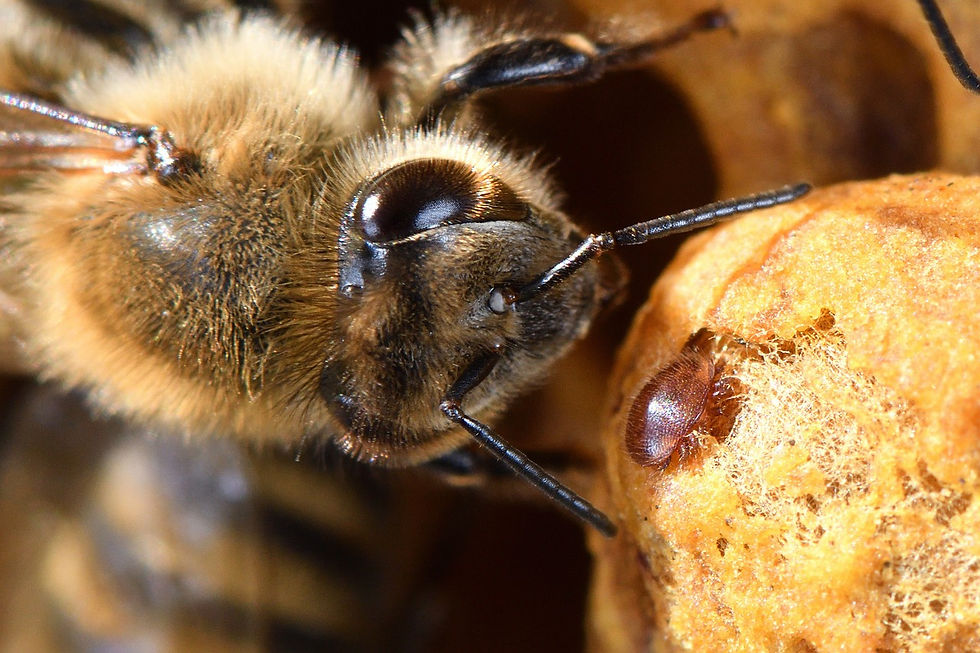Cornerstones of the eradication Plan in the Varroa mite detection NSW
- bicwaorg
- Jul 27, 2022
- 3 min read
Hive Surveillance and Miticide Strips
Methodical inspection and surveillance are the cornerstones of any eradication plan, as guided by the epidemiologist experts working on the case.
The team responding to the Varroa incursion in NSW are using all the available tools to eradicate the mite, whilst balancing the need for business continuity and ensuring we minimise the risk of spread.
The NSW DPI is allowing hives in the blue zone, where mites have not been found, to move within NSW by permit.
This has been permitted based on the assessment of risk and ensures beekeepers’ businesses remain viable, and that hive health can be maintained.
It is important to note that hive movements must not present a risk to eradication efforts or spreading infestations.
Hives that are allowed to move through the ‘NSW Hive Movement Declaration’ will be subjected to surveillance with miticide strips and sticky mats in addition to the alcohol washes.
This combination of surveillance instruments is the most definitive tool we have to ensure mites are not present.
This system of permit and surveillance is undertaken by beekeepers and Compliance Officers will deliver the DPI management team with much-needed essential information on the mite status of hives across NSW.
Currently, the only miticide strips permitted for use in broad surveillance is Bayvarol (flumethrin).
Permits for other options are with the APVMA awaiting approval, which could take some time to progress. Presently, until other options are approved and sourced, the only option is Bayvarol.
Bayvarol is considered to be ‘soft’ on bees, especially compared to formic acid for example.
Unlike the closely related pyrethroid chemical fluvalinate (Apistan), residues are less likely to be a problem for flumethrin (Bayvarol), probably because the amount of active ingredient in miticide strips is significantly lower for Bayvarol (3.6mg of flumethrin) than for Apistan (880mg of fluvalinate).
Several overseas studies have shown flumethrin residues do not persist in honey after treatment, however, low residues of flumethrin have been found in wax.
It is likely that continued and repeated applications could result in an accumulation in wax, with leaching residues in brood honey possible at very low levels.
There is a temporary MRL set for flumethrin in honey at 0.005 mg/kg (5ppb), which is the same or lower than other countries in the world. This means any honey harvested will still be marketable provided the honey meets the MRL.
The general use label for Bayvarol requires treatments to be placed in hives for a period of a six-weeks.
The approved minor use permit for Bayvarol surveillance in NSW is for the strips to only be in hives for a maximum of 6 days, further minimising the risk of residue contamination.
The DPI will be working over a 2-week period with many teams to insert the strips and mats and will then return to remove both strips and mats before the 6 day window expires.
Beekeepers can be confident of the legality of the permit of use for Bayvarol (flumethrin) in hives and the protection of MRLs for honey produced from those hives treated.
Beekeepers can be assured that emergency miticide treatments that are approved and permitted will have accompanying MRLs to ensure that the legality and food safety of the product is not compromised.
It is important that industry complies with the requirements of the DPI permits for hive movements, which forms part of the overall eradication response.






Comments